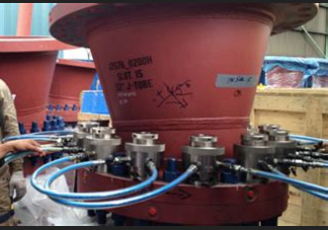Hi All,
My client has a specification requiring all bolts 1” and above to be hydraulically tensioned. I have a pipe flange connecting to a compressor with a tapped hole - would you normally apply hydraulic tensioning to a tapped hole? My concern would be that the thread gets damaged during the process resulting in a replacement compressor.
Thanks.
My client has a specification requiring all bolts 1” and above to be hydraulically tensioned. I have a pipe flange connecting to a compressor with a tapped hole - would you normally apply hydraulic tensioning to a tapped hole? My concern would be that the thread gets damaged during the process resulting in a replacement compressor.
Thanks.

